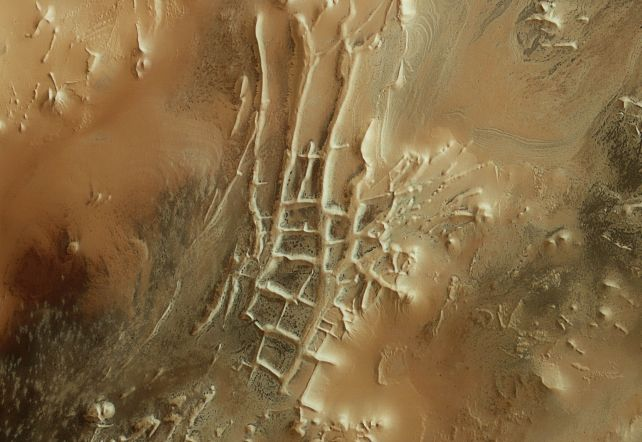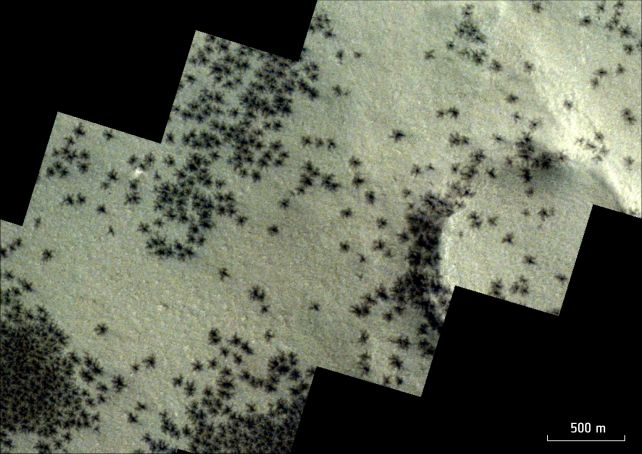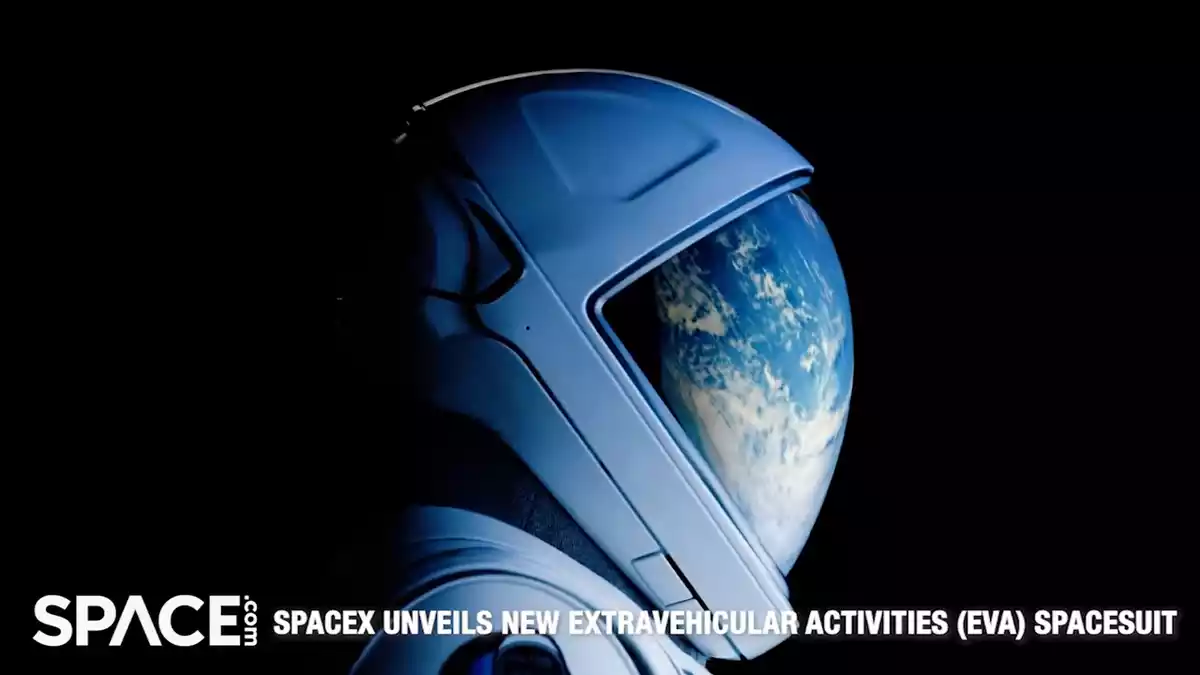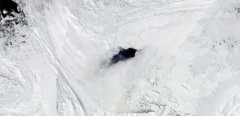There may be no insects on Mars, but new photos from an orbiting spacecraft have revealed a host of "spiders" that appear to be crawling across the dusty surface.
Of course, these are not real live arachnids; rather, they are dark spindle-shaped formations on the Martian surface created solely by non-biological processes. They are called "spiders" because they resemble spiders, with a central dark spot surrounded by thin stripes radiating outwards.
They are formed as a result of seasonal changes on the Red Planet, extreme cold weather followed by spring warming.
Although Mars has seasons, thanks to its Earth-like axial tilt, these seasons are very different from those we see on our home planet. In winter, the temperature drops below minus 123 degrees Celsius (minus 190 Fahrenheit), and almost everything freezes.
This also applies to carbon dioxide, which forms surface deposits of a substance known on Earth as dry ice. As the cold winter begins to turn into spring, the temperature rises; but where regular ice melts in a warming atmosphere, dry ice does not. Instead, it sublimates directly into a gas.

When this happens to the ice at the bottom of the deposit, the pressure builds until a mini-explosion occurs and the Martian surface erupts like a boil. Cracks appear in the ice, and dark, dusty material from beneath the surface is blown up and sprayed with the erupting gas in huge geysers, creating dark spots that can be up to a kilometer (0,6 miles) across.
The radial lines are actually below the surface of the ice. Images from the High Resolution Stereo Camera (HRSC) on the European Space Agency's Mars Express Orbiter show only dark, freckle-like spots scattered across the sand.

However, the Color and Stereo Surface Imaging System (CaSSIS) instrument on board ESA's ExoMars Trace Gas Orbiter can see in a wider range of wavelengths and detects spider-like tendrils extending outward just below the ice's surface.
A new image of the Martian city of the Incas – a strange formation so named because from above it resembles ancient ruins – shows freckled spots that show just how active the surface of Mars can become as it begins to wake up to warm spring days.
It's exciting to think what it will be like when the ice melts and the dust hisses into the air. Maybe, if we're lucky, Martian explorers will one day be able to send home footage of this strange alien process in action.


 224
224












